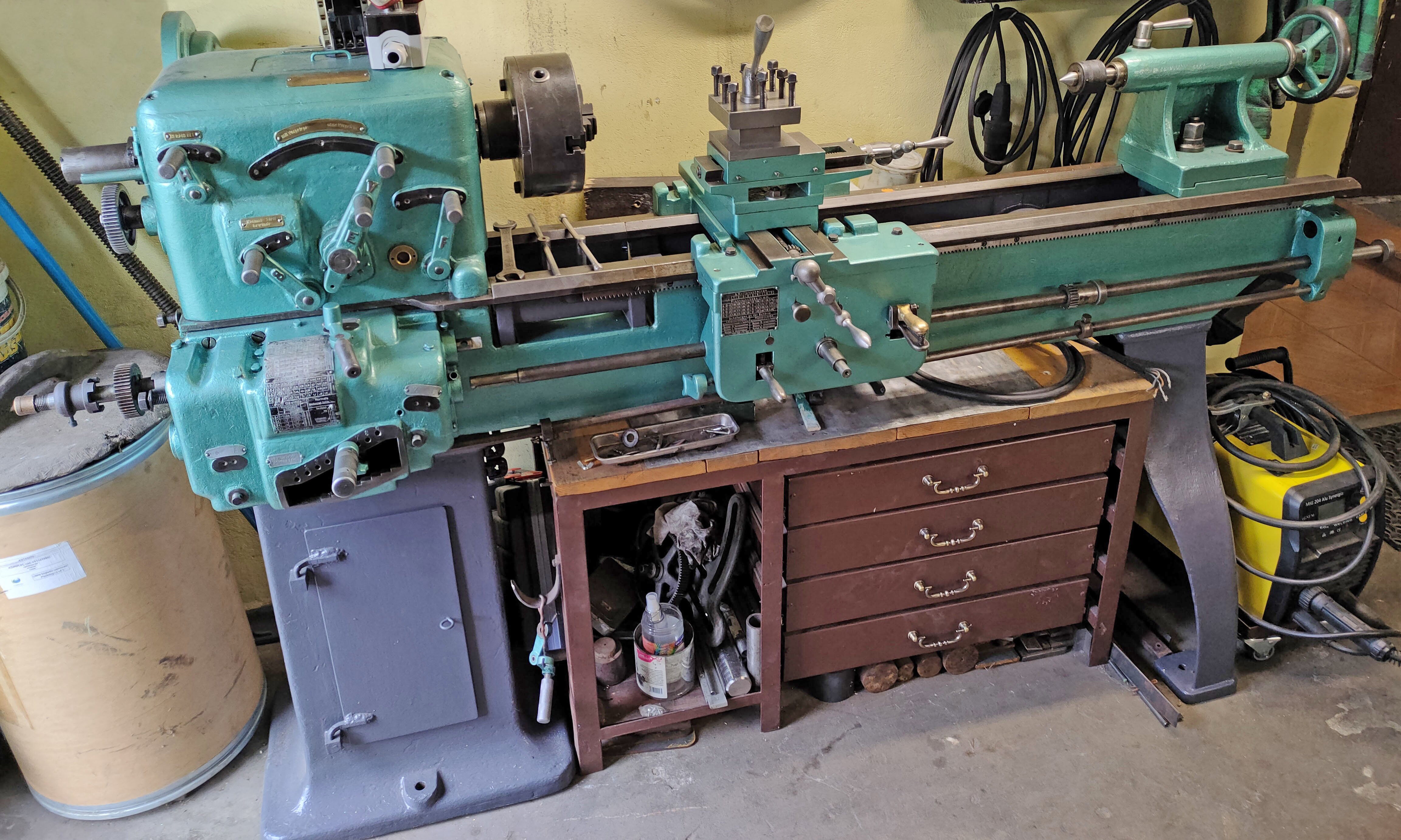|
Home Machine Tool Archive Machine-tools Sale & Wanted |
|
An ornamental turning lathe, the W.H. Bailey had a centre height of around 4 inches and could take perhaps 30 inches between centres. Mounted on a mahogany stand, the lathe would have been made from 1860 to 1880. The only clue as to the maker - and not unusual to find on a lathe of this era - is a stamping low down on the front face of the headstock: "W.H. Bailey London". A lathe maker of this name is not recorded, but it might be that W.H. Bailey, once a very well-known Manchester engineer and inventor who had inherited his father's Company, was indeed the designer or manufacturer. W.H. Bailey & Co. dates back to 1839, with the establishment of John Bailey's clock-making business at Albion Works in Salford. By 1863, the business was known as John Bailey & Co., and was listed in Slater's Trade Directory as turret clock makers, brass founders, steam and water gauge makers, machinists, and copying press makers. A clue to the son's interest in high class machine tools and ornamental turning might lay the clock-making part of the enterprise, though with nearly 100 patents to his name (which covered a wide range of fields), it is entirely possible that he had some involvement, possibly in the ownership of a small machine tool maker in London. Either that, or the lathe was commissioned for his personal entertainment and made to bear his name. An account of Sir W.H. Bailey's life can be found at the bottom of page 2and further details of the W.H. Bailey & Co. and how it developed here. |
||


|
to the left of the headstock is a mystery--and may have parts missing |
||



|
Might the cast-in name "Aux Forges de Vulcain" be the name of the casting company - or was it an import from France or even a later modification to drive the lathe? Vulcan is, of course, the god of fire including the fire of volcanoes, deserts, metalworking and the forge in ancient Roman religion and myth |
||


|
|
||

|
|
||


|
|
||



|
|
||

|
three and four-jaw chucks, faceplates, changewheels, a wood-drive centre, an indexing plate, and other small parts |
||






|
The badge on the lid of the box is engraved "Presented to Rev. C.W.Lyne by friends in the St.BARNABUS KENSINGTON SUNDAY SCHOOL BAND OF HOPE AND ATHLET CLUBS 31 MAY 1906" If the lathe truly was a present to the Rev. Lyne, it was indeed a most generous one. |
||
|
Home Machine Tool Archive Machine-tools Sale & Wanted |